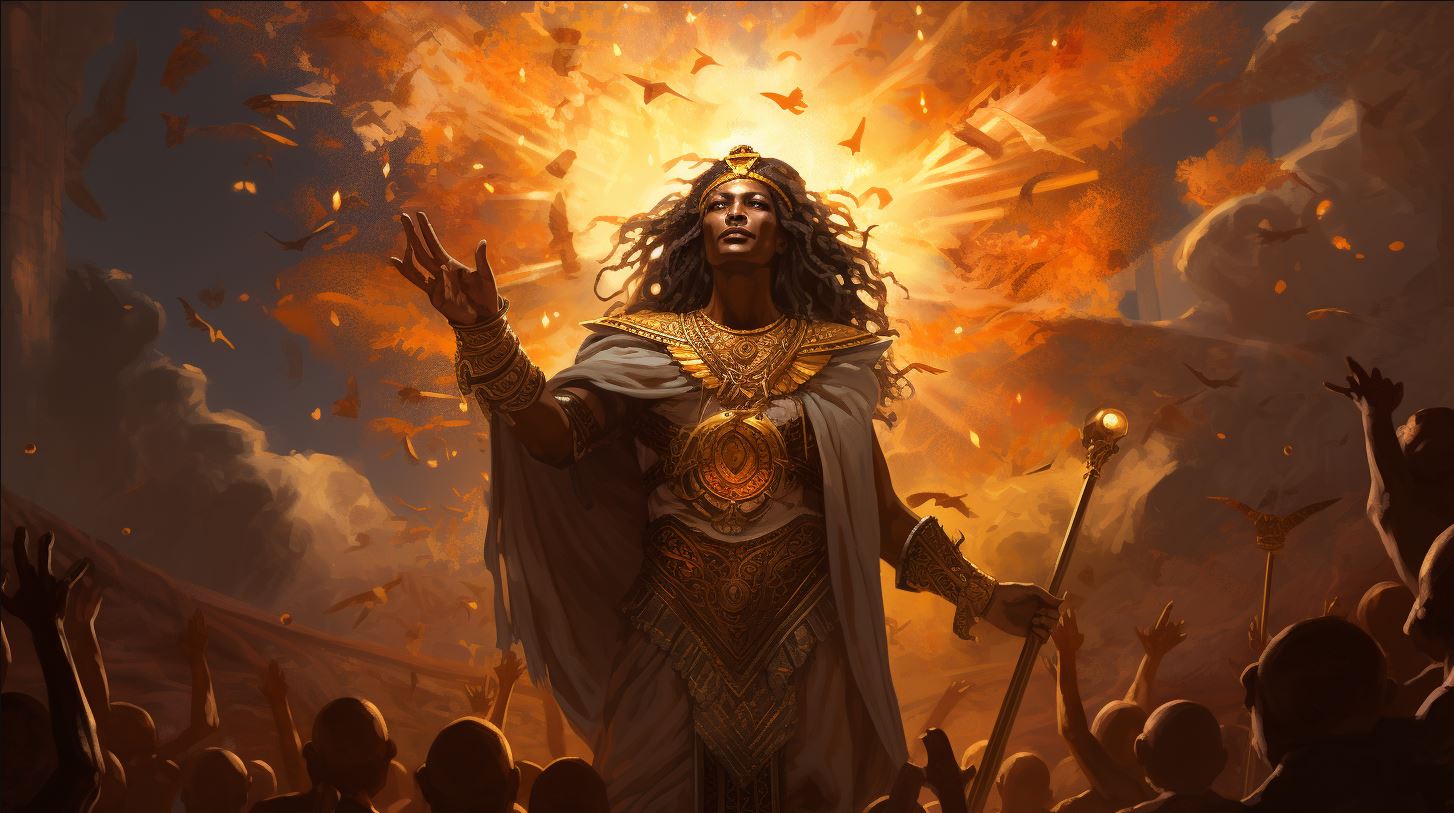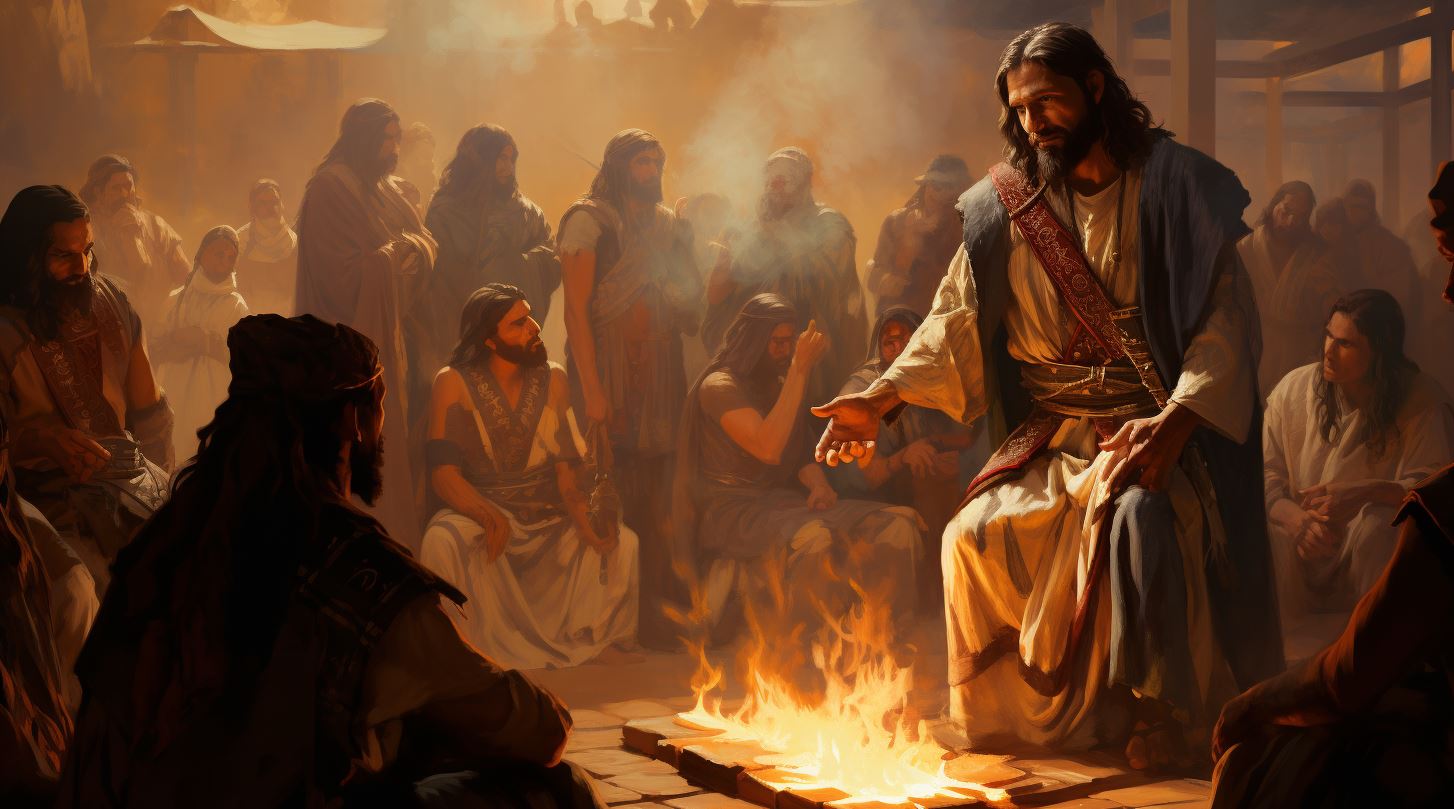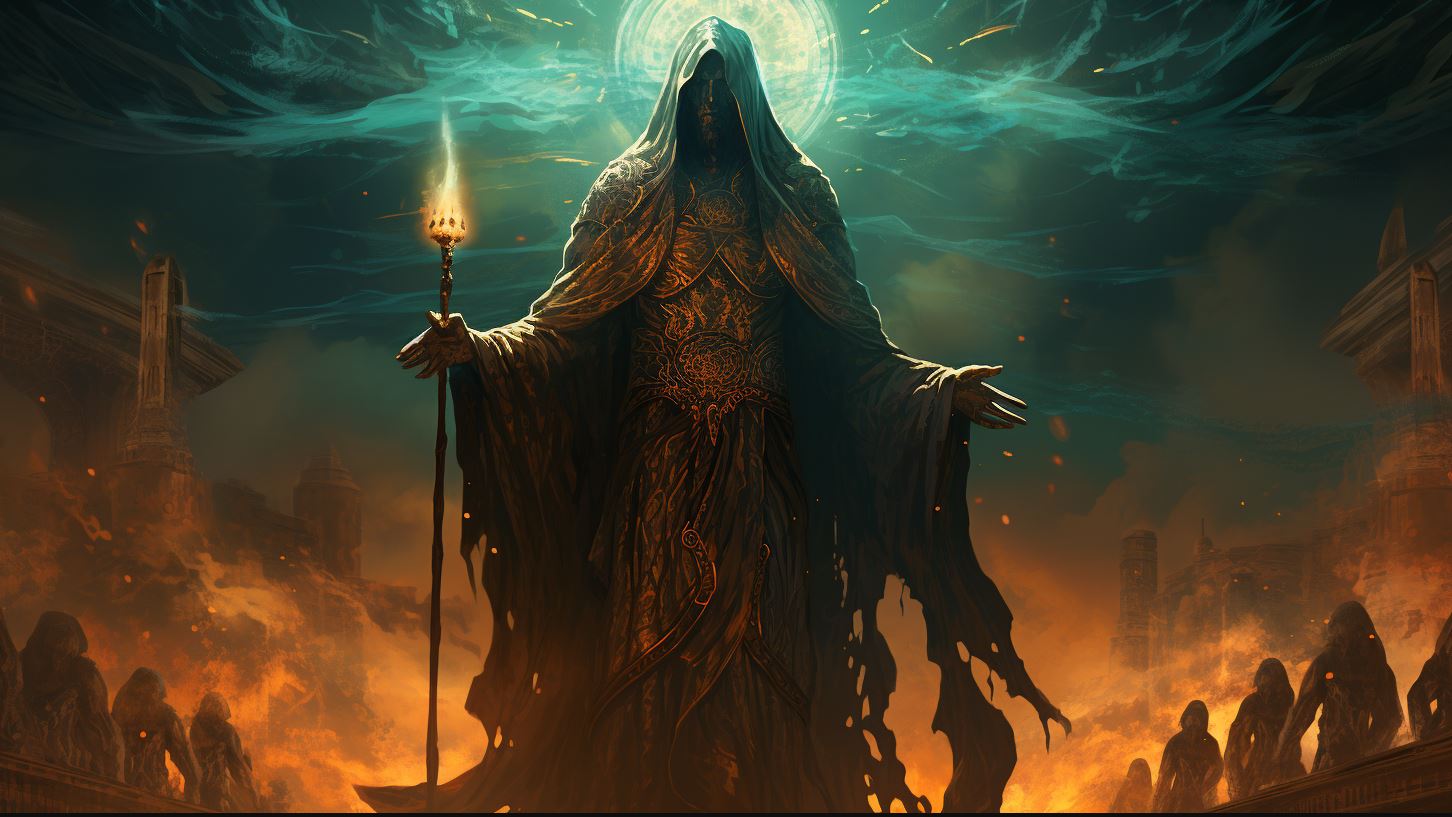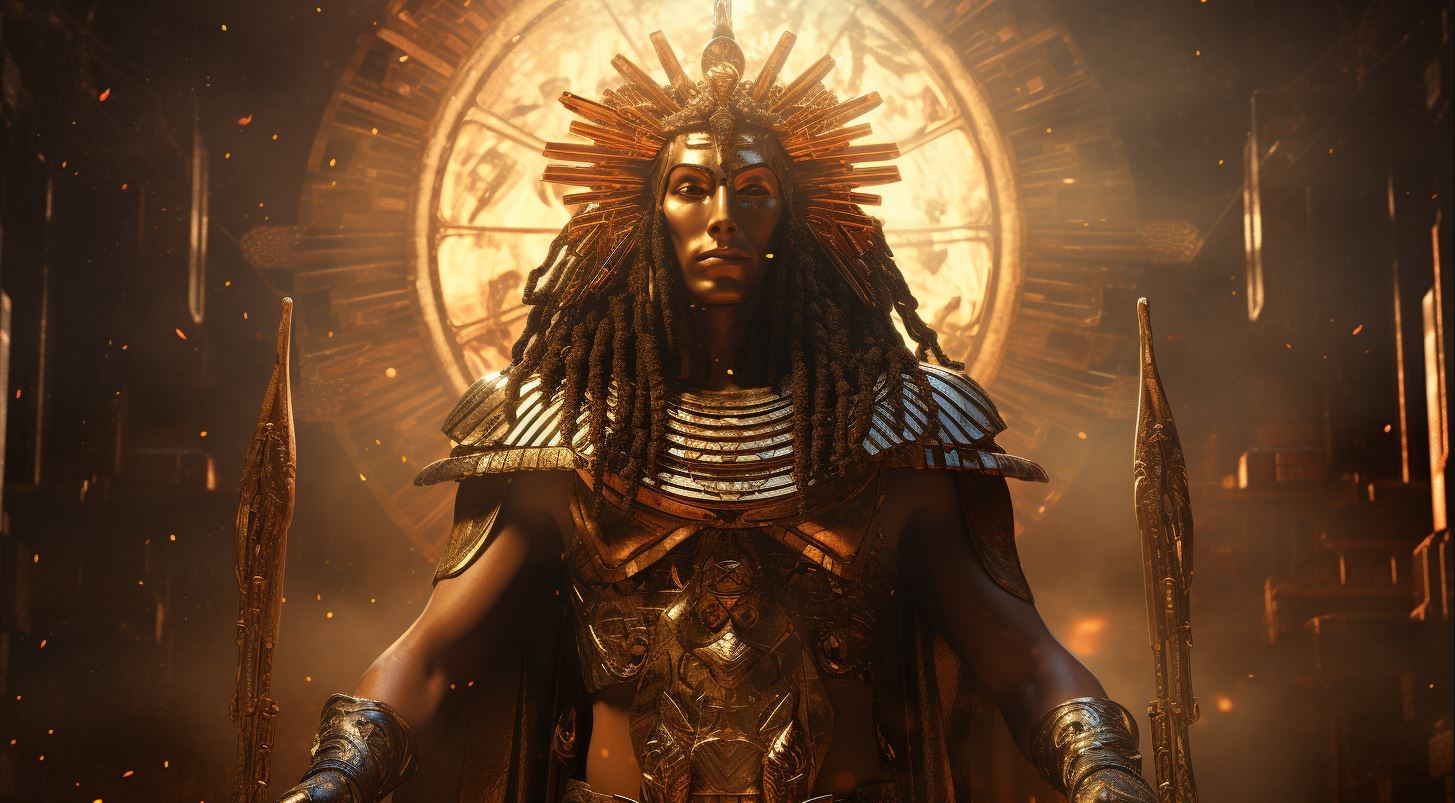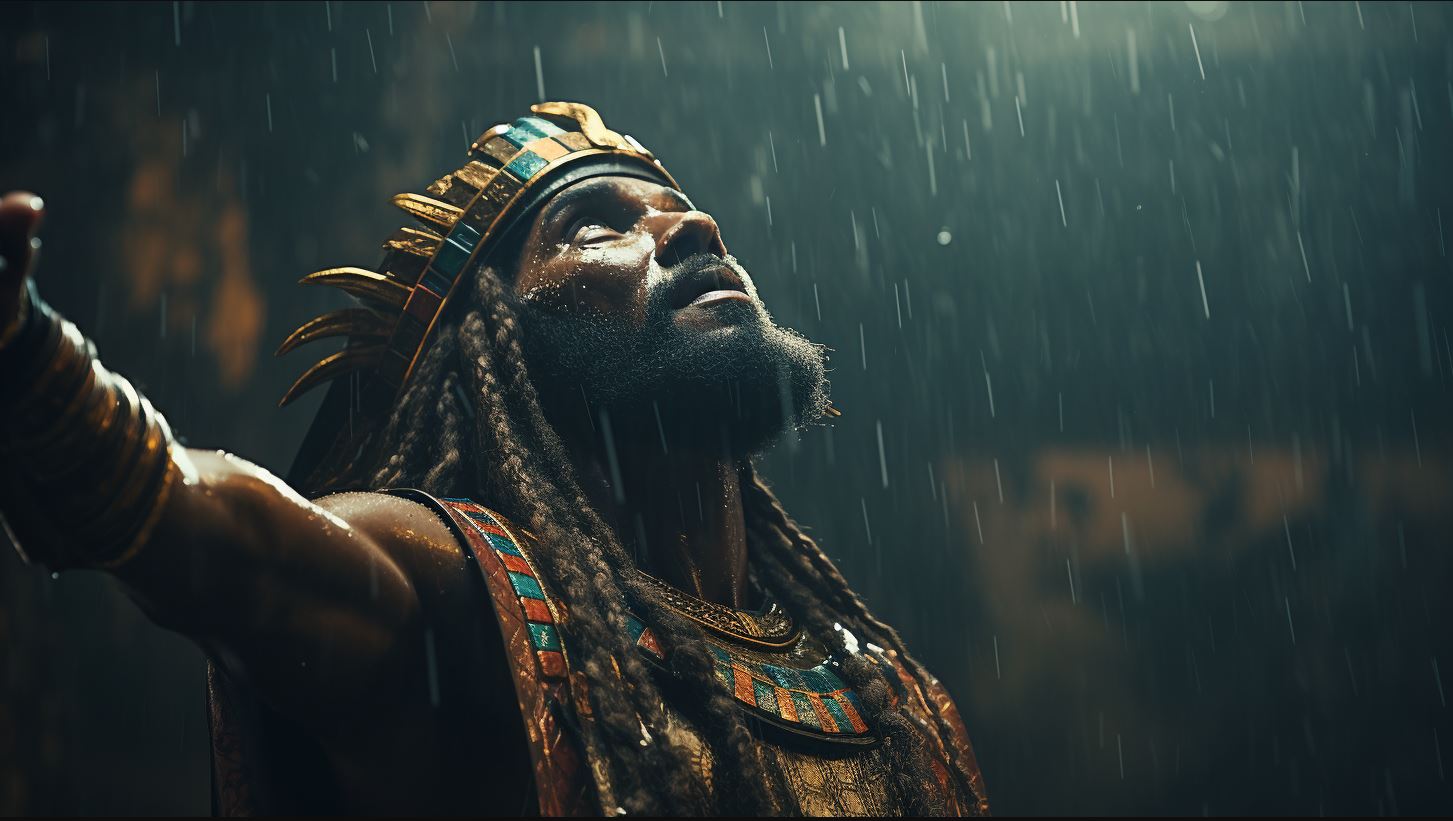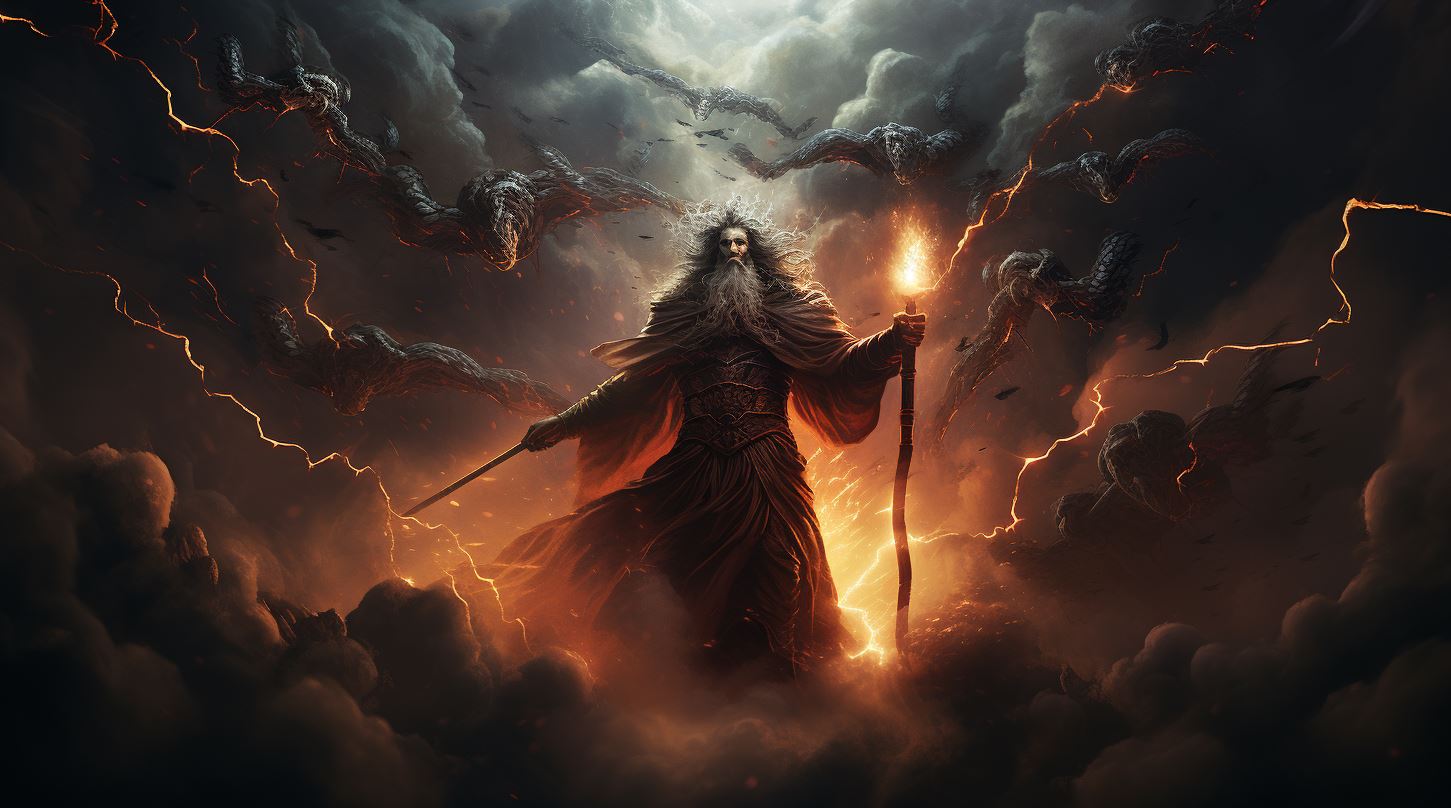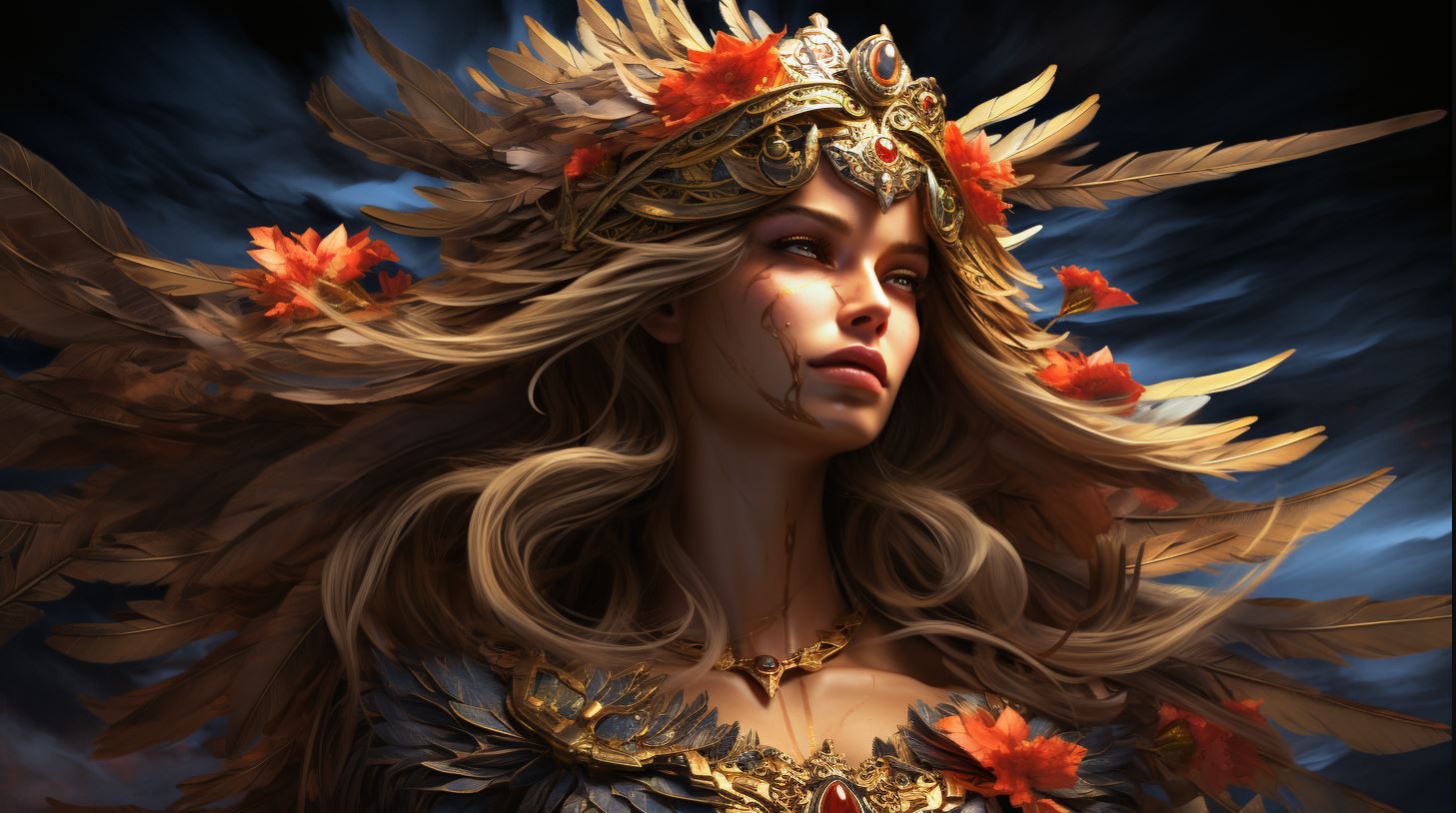Dagan God: The Ancient Deity of Prosperity and Fertility
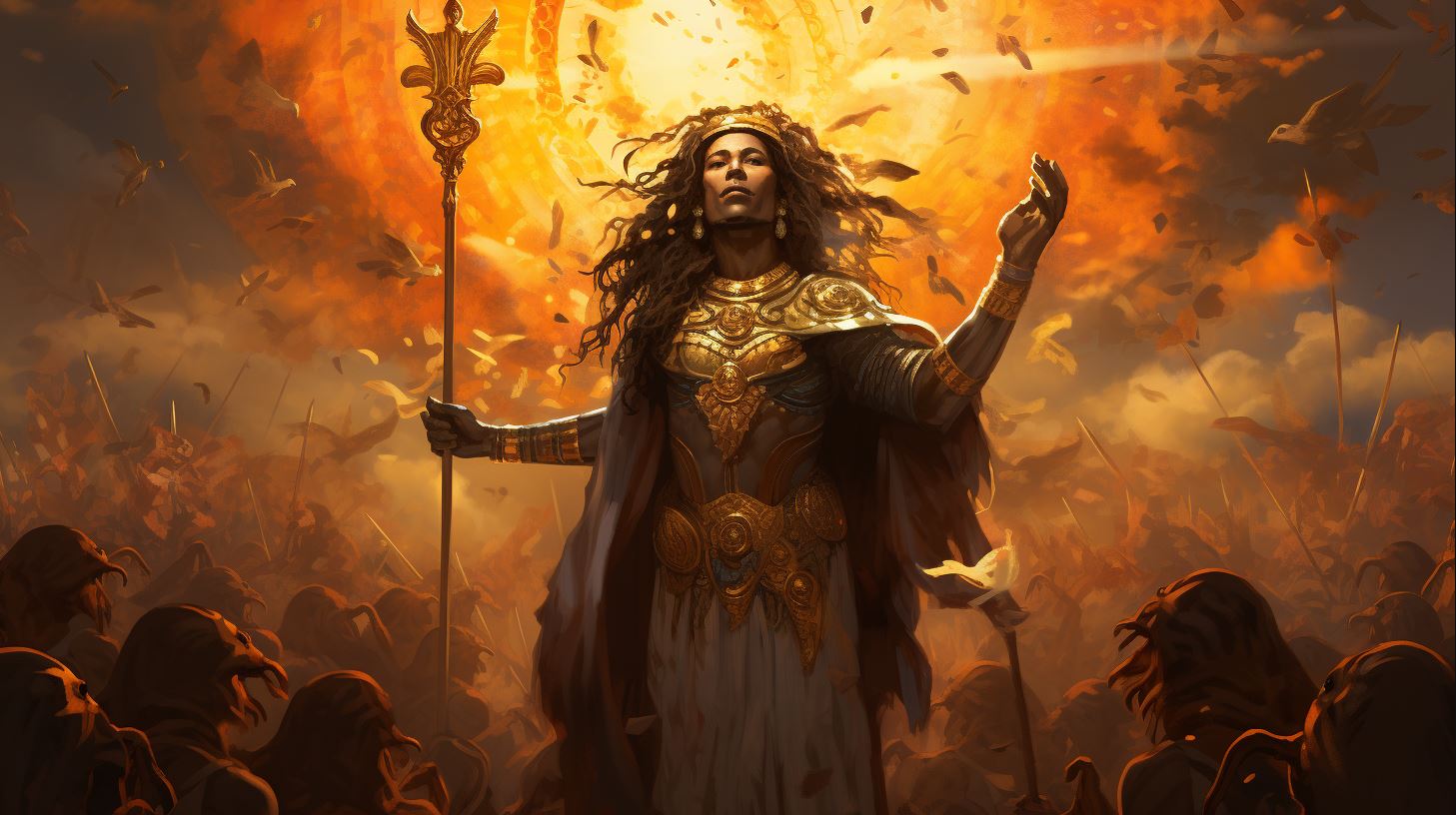
Dagan God, also known as Dagon, was an ancient deity revered in Syria, Mesopotamia, and the eastern Mediterranean. Associated with prosperity and royal legitimacy, Dagan was considered the father of gods and worshipped for his connections to agriculture and fertility.
This deity’s origins and etymology remain debated, with limited extrabiblical evidence of Dagan’s role as the national god of the Philistines. Archaeological records spanning from 2500 BCE to later Mesopotamian history depict Dagan, often represented as a triton or fish-like god.
Dagan’s genealogy intertwines with figures like the goddess Ishara and the god Baal.
The Origins and Significance of Dagan God
The Diverse Names and Representations of Dagan
Dagan God, also known as Dagon, was a revered deity in ancient Syria, Mesopotamia, and the eastern Mediterranean region. This ancient god was associated with prosperity, fertility, and agriculture, representing the bountiful abundance of the land.
Throughout history, Dagan has been referred to by various names, reflecting the diverse cultures and beliefs in which he was worshipped. These different names highlight the significance and widespread influence that Dagan held in the ancient world.
Dagan in Ancient Near Eastern Texts
The presence of Dagan God can be traced back to ancient Near Eastern texts, providing valuable insights into his mythology and significance. These texts depict Dagan as a powerful deity, often associated with the divine rulership and legitimacy of kings.
From hymns to prayers, these ancient writings showcase the reverence and veneration bestowed upon Dagan by the ancient civilizations of the region. Through studying these texts, we can better understand the profound role that Dagan played in the religious and cultural practices of the time.
Dagan God in Mythology and Religion
Dagan, also known as Dagon, holds a significant place in ancient mythology and religious beliefs. In this section, we explore Dagan’s role as the Father of Gods and Protector of Agriculture, as well as his relationship with other deities.
Dagan as the Father of Gods and Protector of Agriculture
Worshippers sought Dagan’s blessings for agricultural endeavors, offering prayers and performing rituals to honor his divine presence. The fertility and agricultural domains of Dagan intertwined, emphasizing the crucial role he played in sustaining the livelihoods of ancient communities.
The Relationship between Dagan and Other Deities
Dagan’s interactions with other deities shed light on the complex interconnections within ancient pantheons. His genealogy reveals associations with various important divinities of the time, such as the goddess Ishara and the god Baal.
In some mythological accounts, Dagan’s close connection to Baal, the storm and fertility god, is emphasized. Together, they formed a harmonious pair representing the essential elements for thriving civilizations: fertility, prosperity, and divine protection.
This relationship highlights the interconnectedness of different aspects of life and highlights Dagan’s role as a mediator between gods and humans.
- Dagan’s association with Ishara, the goddess of love and fertility, showcases his influence in matters of procreation and the continuation of life.
- The links between Dagan and other prominent deities, such as Enki and Ninkasi, further demonstrate his significance and his widespread presence across ancient cultures.
These relationships and associations solidify Dagan’s status as a prominent figure in mythology and religion, venerating him as a guardian of prosperity and a facilitator of harmony between gods and mortals.
Dagan God in Biblical Context
Dagan God holds a significant place in biblical contexts, with references to a similar deity named Dagon. This section explores the relationship between Dagan and Dagon, along with Dagan’s association with the Ark of the Covenant.
Dagon: The Philistine God Resembling Dagan
The biblical accounts mention Dagon as a god worshipped by the Philistines, bearing resemblances to Dagan. Dagon is depicted as a major deity in Philistine culture, associated with fertility, agriculture, and prosperity.
However, the next day, they discovered that their idol had fallen before the Ark. This event was interpreted as a sign of Dagon’s inferiority and the superiority of the Hebrew God.
The interplay between Dagan and the Ark of the Covenant reflects the clash of divine powers in ancient history. The Ark, symbolizing the presence of Yahweh, posed a challenge to the prominence of Dagan and other local deities worshipped by neighboring cultures.
The biblical narrative emphasizes the supremacy of Yahweh over Dagan, highlighting the power struggles between different religious beliefs and asserting the superiority of the Hebrew God. This story illustrates the theological and ideological conflicts prevalent during that era.
The association between Dagan and the Ark points to the complex interconnections between different religious traditions and their attempts to assert their respective supremacy. It also underscores the significance of Dagan in the religious and cultural milieu of ancient civilizations.
Archaeological Evidence of Dagan Worship
In order to understand the worship of Dagan, archaeologists have studied various aspects of ancient civilizations, including the temples and rituals dedicated to this deity, as well as the iconography found in ancient artifacts.
Temples and Rituals Dedicated to Dagan
Excavations in different regions have revealed the remains of temples dedicated to Dagan, providing insights into the religious practices associated with this ancient deity. These temples served as centers of worship, where rituals were conducted to honor Dagan and seek his blessings for prosperity and agricultural abundance.
Archaeological evidence suggests that these temples were often grand in scale and designed with intricate architectural features. They were adorned with artwork and inscriptions that depicted scenes related to fertility, agriculture, and the divine nature of Dagan.
Rituals performed within these temples likely involved offerings, prayers, and ceremonies aimed at fostering a harmonious relationship with the god of prosperity.
Iconography of Dagan: Insights from Ancient Artifacts
The iconography associated with Dagan provides further understanding of how this deity was perceived and represented in ancient cultures. Ancient artifacts such as statues, seals, and amulets have provided valuable iconographic representations of Dagan.
These artifacts often depict Dagan as a triton or a fish-like deity, emphasizing his association with water, fertility, and abundance. Some statues feature Dagan holding agricultural tools or a sheaf of grain, underscoring his role as a patron of agriculture.
The presence of these artifacts in various archaeological contexts suggests that Dagan enjoyed widespread reverence and was considered an influential figure in the lives of the people who worshipped him.
The iconography also reveals Dagan’s connection with other deities, showcasing his participation in the ancient pantheon and his association with other gods and goddesses, such as Ishara and Baal. These depictions provide valuable insights into the religious beliefs and cosmology of the civilizations that revered Dagan.
In conclusion, the archaeological evidence pertaining to Dagan worship sheds light on the temples, rituals, and iconography associated with this ancient deity. The existence of these physical remnants highlights the extensive reverence and importance attributed to Dagan as the god of prosperity and fertility in ancient societies.
Interpretations and Debates Surrounding Dagan God
Interpretations and debates regarding Dagan God have sparked considerable interest among researchers, scholars, and historians. This section explores two key aspects: the controversy over Dagan’s origin and etymology, and Dagan’s role in Mesopotamian and Ugaritic cultures.
The Controversy over Dagan’s Origin and Etymology
Researchers have long debated the elusive origins and etymology of Dagan God. While there is no consensus, some believe that his name is linked to climatic conditions and grain cultivation, associating him with the fertility of the land.
However, others argue that Dagan’s name and significance may have evolved over time, influenced by various cultures and languages.
Further complicating the matter is the scarcity of extrabiblical evidence relating to Dagan’s role as the national god of the Philistines.
Despite this, researchers continue to delve into linguistic, anthropological, and archaeological data, hoping to unravel the mystery behind Dagan’s origins.
Dagan’s Role in Mesopotamian and Ugaritic Cultures
Beyond his enigmatic origins, Dagan God played a significant role in Mesopotamian and Ugaritic cultures. As the father of gods, Dagan was associated with legitimacy, prosperity, and agricultural abundance, making him a crucial deity in ancient societies.
In Mesopotamia, Dagan was revered as a protector and provider, overseeing the well-being of crops and the success of agricultural endeavors. His association with fertility and agriculture extended to Ugaritic culture as well, where he held a prominent place in religious practices and belief systems.
The exact nature of Dagan’s cult and rituals in these civilizations is a subject of ongoing debate. Scholars continue to analyze archaeological discoveries, ancient texts, and iconographic representations to gain further insights into the multifaceted role of Dagan God in ancient Mesopotamian and Ugaritic societies.
Legacy and Influence of Dagan God
Dagan God’s enduring legacy can be seen in both the Bronze Age Syria and modern scholarship. The deity’s influence spanned centuries, leaving a remarkable impact on various aspects of ancient and contemporary cultures.
Dagan’s Continued Worship in Bronze Age Syria
The worship of Dagan persisted throughout the Bronze Age in Syria, demonstrating the deity’s significance and the deep-rooted devotion of the people. Temples dedicated to Dagan were constructed, serving as sacred spaces where rituals and ceremonies were performed to honor the god of prosperity and fertility.
These temples were gathering places for communities, fostering a sense of unity and spirituality among the worshippers.
Worship of Dagan extended beyond the temple walls as well. In Bronze Age Syrian society, agricultural practices played a vital role, and the belief in Dagan as the protector of agriculture remained strong.
Farmers sought the blessings of Dagan for bountiful harvests, fertility of the land, and overall prosperity. The continued veneration of Dagan speaks to the lasting impact and influence of this deity in the daily lives of the people.
Dagan’s Presence in Modern Scholarship
Dagan’s significance goes beyond ancient times, as the deity continues to captivate the attention of modern scholars and researchers. The study of Dagan offers insights into the religious and cultural practices of ancient civilizations, shedding light on their beliefs and worldview.
Modern scholarship delves into various aspects of Dagan worship, including the deity’s portrayal in ancient texts, iconography, and the rituals associated with his cult. Researchers explore the complex genealogical connections of Dagan with other deities, such as Ishara and Baal, unraveling the intricate web of divine relationships in ancient mythologies.
Furthermore, ongoing debates surrounding Dagan’s origin and etymology contribute to the dynamic field of religious studies. Scholars delve deep into historical records, linguistic analysis, and archaeological discoveries to unveil the mysteries surrounding this ancient deity, offering new perspectives and interpretations that enrich our understanding of ancient cultures.
In conclusion, Dagan God’s legacy extends through time, leaving an indelible mark on Bronze Age Syria and continuing to inspire the scholarly pursuit of ancient religious beliefs and practices.
…

